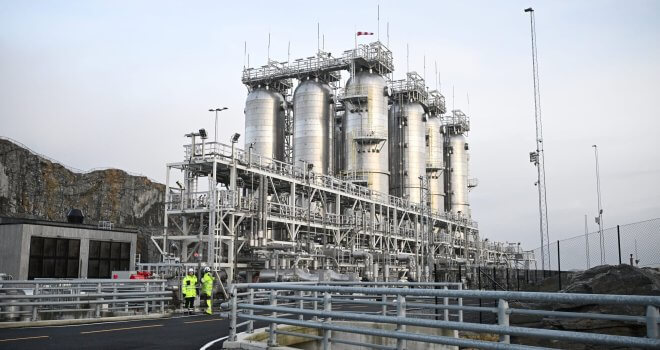Harnessing Automation To Deliver Project Certainty In An Uncertain World

Regardless of sector, the prospect of risky errors, costly rework, and – ultimately – project failure is never far from any project professional’s mind. But, in today’s increasingly uncertain world, getting project design ‘right first time’ is becoming ever more crucial for timely, competitive delivery.
Our Associate Editor, Amy Hatton, recently spoke to Jordan Kyriakidis, Founder of QRA, to explore the increasingly significant role of automation, AI, and Natural Language Processing in taking the guesswork out of project requirements, as well as freeing human talent to focus on strategy, not drudgery.
If you enjoy this article and you’d like a more in-depth view, watch Amy’s recent webinar with Jordan on demand here.
This is not the first time I have interviewed Jordan, a theoretical physicist and former university professor turned tech entrepreneur. In a PM Today podcast earlier this year, we discussed the importance of a ‘right first time’ approach to project requirements in minimising risk, error, rework, and even total project failure. Now, with global volatility at an all-time high, this whole debate is becoming more business-critical than ever.
“Complexity and pressure have been watchwords in project management for years”, Jordan explains. “But recent events have accelerated that – the pandemic, socio-political volatility, economic turbulence, digital transformation, and fast-changing customer expectations. At the highest level, commercial competition is greater than it ever has been. That puts downward pressure on margins, which in turn means that project managers are operating with leaner resources. At the same time, customers are constantly demanding more, better, and faster. So, it may sound like a cliché, but it really is true that project professionals and PMOs are having to do more with less.”
It’s QRA’s mission, Jordan explains, to provide simple, powerful solutions for these complex issues by helping PMs and PMOs to find and eliminate potential errors right at the start of project design. That’s the ethos driving the company’s proprietary automation technology, QVscribe. And quite rightly so! Research shows that 35% of project failures are caused by inaccurate requirements gathering (Axelos, 2019).
“The problem is that, when inconsistencies and errors creep into project requirements, they most likely won’t be detected until much later,” says Jordan. “But, by the time you’ve reached ‘much later’, the issue is already embedded into the project and it’s going to be much more difficult to backtrack, unpick where things have gone wrong, and address the discrepancies. Risk suddenly increases, speed to market suddenly decreases, and at worst entire projects and programmes can be completely derailed.”
If you’re thinking this is overly dramatic, Jordan has a story to tell that illustrates the point all too vividly. “I won’t name names, but some years back there was a massive international collaboration to launch a space probe to Mars. You can imagine the enormity of scope and complexity between countries, scientists, manufacturers, supply chains, and so on. It all seemed to be going great – except for one small detail. Different countries involved in the project were using different unit measurements. So, as controls were being transmitted to the in-flight spacecraft, the commands were being sent in imperial units, but the craft was receiving them in metrics.
“The result? This massively expensive, important piece of kit, which had taken many years and billions of dollars to create, just veered off into space, never to be seen again! It was an apparently insignificant detail but missing that one inconsistency at the requirements stage caused the entire programme to collapse in the most disastrous way.”
It’s exactly that kind of inconsistency that QVscribe – powered by AI and Natural Language Processing – is designed to detect. All of this is very impressive – but I feel compelled to challenge Jordan. In projects and programmes where – by his own admission – requirements are so complex and interrelated, is it really possible to achieve ‘right first time’, every time?
“It’s important to understand what ‘right first time’ really means,” Jordan says. “I subscribe to the adage in physics that things should be as simple as possible – but not simpler. What I mean by that is: of course, in the initial requirements and design stage, there will always be things you don’t know. What tends to happen, though, is that in the effort to be thorough, when people are faced with unknowns, they resort to guesswork. But, as any project develops over time, things will change. So, ‘right first time’ should be seen as the process of accurately quantifying and describing what you absolutely do know. What you don’t know should at least be recognised and named, so that those variables and uncertainties are on the radar and you’re ready to consider and tackle them moving forwards. My view is that project errors should be detected and corrected with a keyboard backspace, right at the start – not later, via a total project rework or product recall. Technology like QVscribe makes that possible with consistency and certainty.”
Indeed, in a recent webinar I hosted with Jordan and his colleague, James Carr (now available on demand here), I saw a demo of the technology in action. Whilst, as a journalist, I’m not here to endorse specific products, I can certainly see the value in QVscribe’s ability to integrate with everyday tools like Word and Excel, identify any inconsistencies, and display these with a scored, RAGGED approach that will be second nature visual indicators to project managers. I can’t help but wonder, though, about the ongoing debate as to how far technology should go in the workplace? Surely, human judgement is always more sophisticated than machine programming?
“Yes, on one level I totally agree with you,” Jordan says. “Pit a machine against a human and the human is always going to come out on top in areas like subjective judgement, imagination, deep thinking, and intelligent communication. But if you’ve got a project with, say, 10,000 requirements, it could be that only a few inconsistencies present a really serious risk to delivery. For a person, finding those inconsistencies is literally like looking for a needle in a haystack. Imagine the man hours! Plus, the chance of human error is pretty much inevitable.
“What we’re doing with QVscribe is bringing simplicity and consistency to a process that has the power to massively reduce complex risks, right at the start. But we’re also freeing the project professional to move up and across and handle the more strategic stuff – the stuff humans excel at. Innovation, leadership, judgement, and negotiation – that’s what project managers and PMOs should be focused on, not trawling through documents trying to compare one word to another. So, for me, the technology underpins the capacity of project professionals to bring that strategic value to the business. Ultimately, that’s what’s going to make the magic happen and generate the next big innovation to market – and that in turn is what’s going to promote the organisation’s competitive edge.”
Find out more:
For a lively, in-depth discussion of these issues including practical demos of QVscribe in action, watch Amy’s recent webinar with Jordan on demand.
Listen to the PM Today podcast with Amy and Jordan here.
Interested in QVscribe? Book a free, personalised demo here.




